Презентация l14


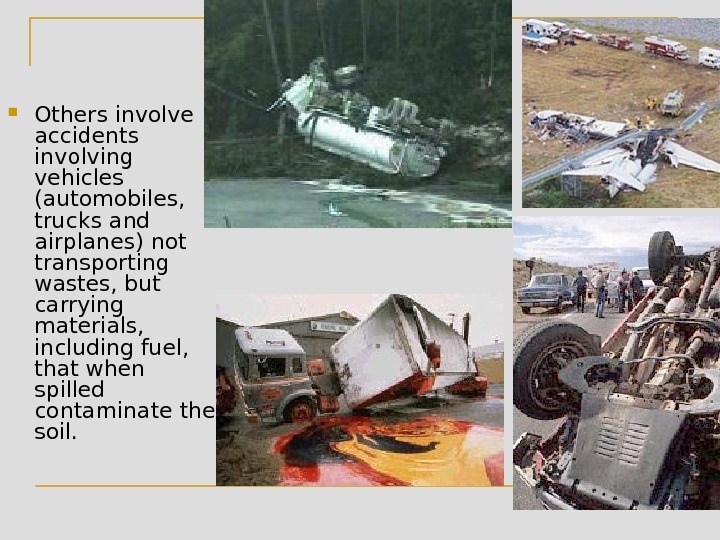
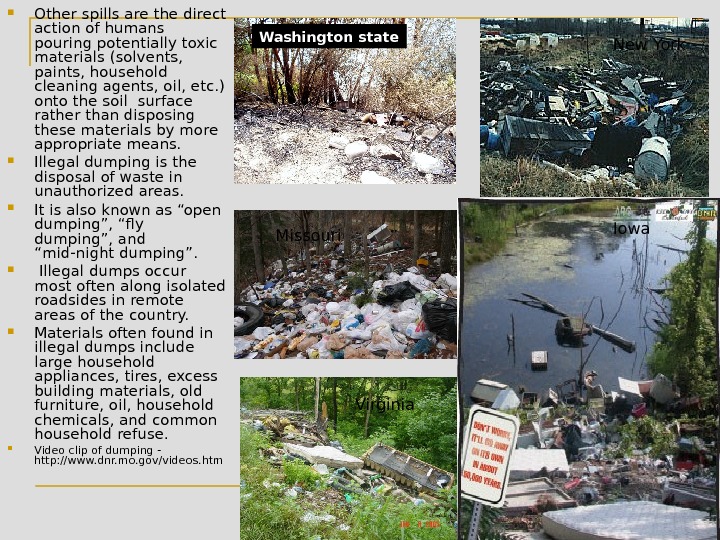
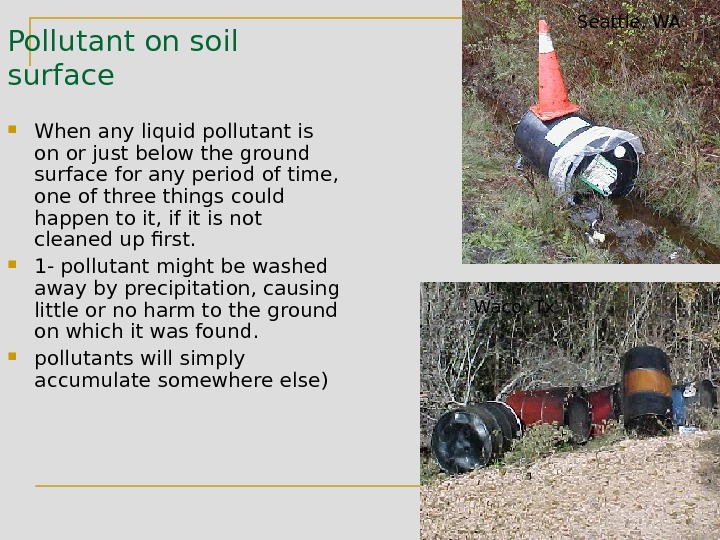
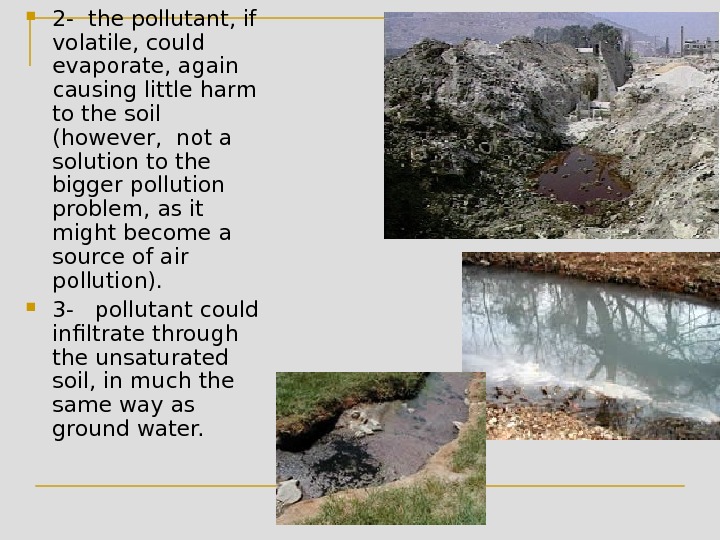

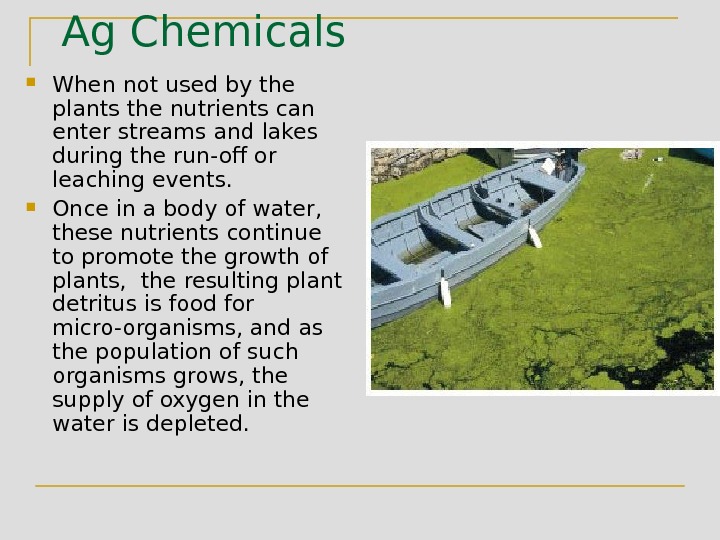


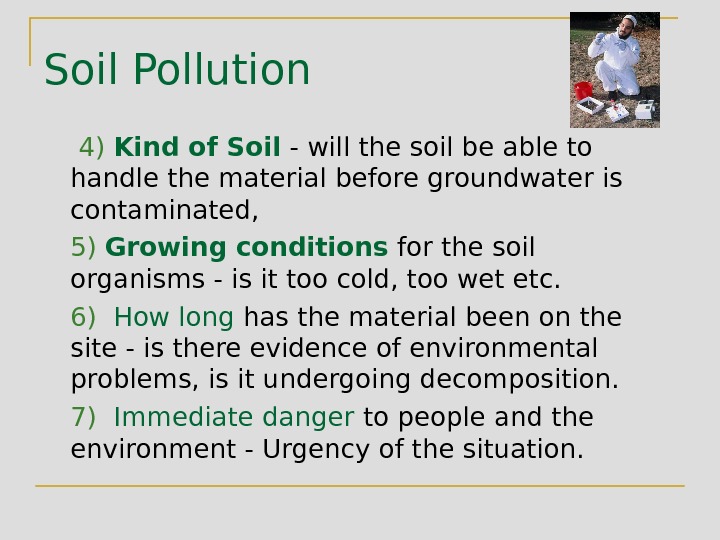
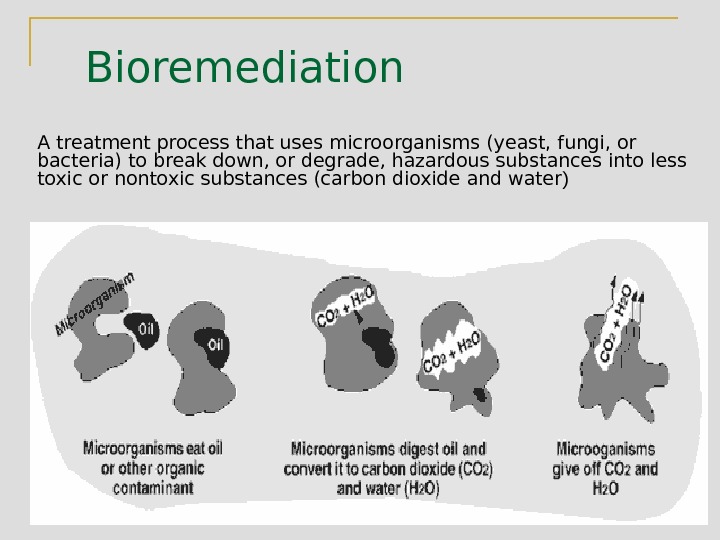
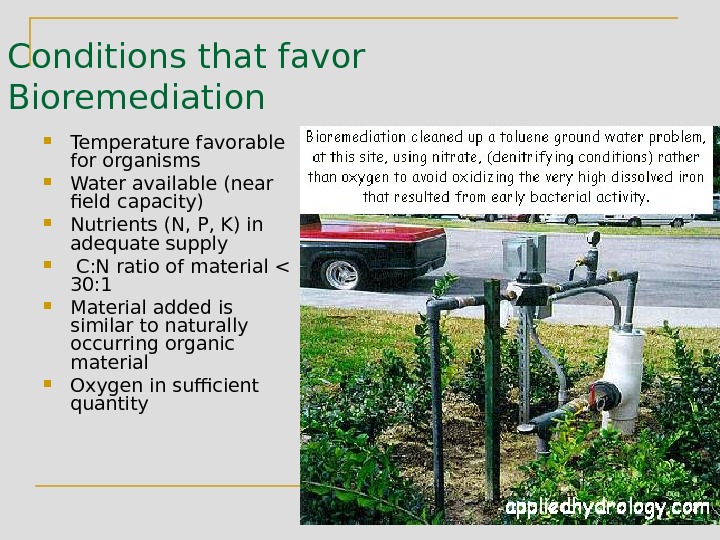

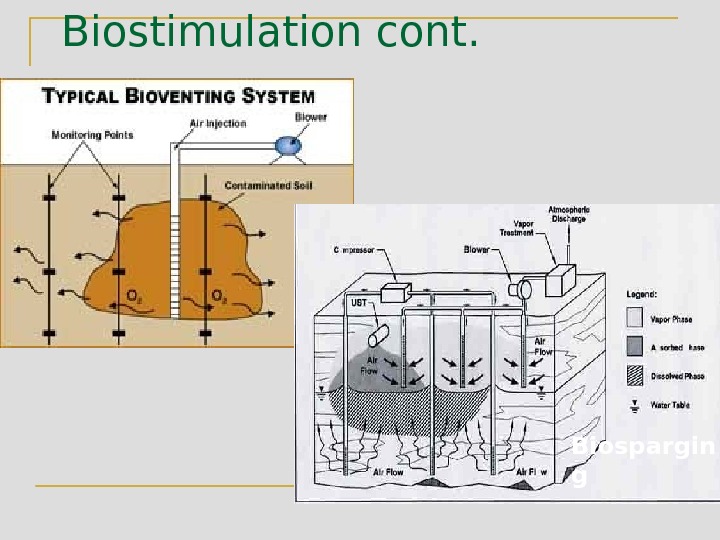


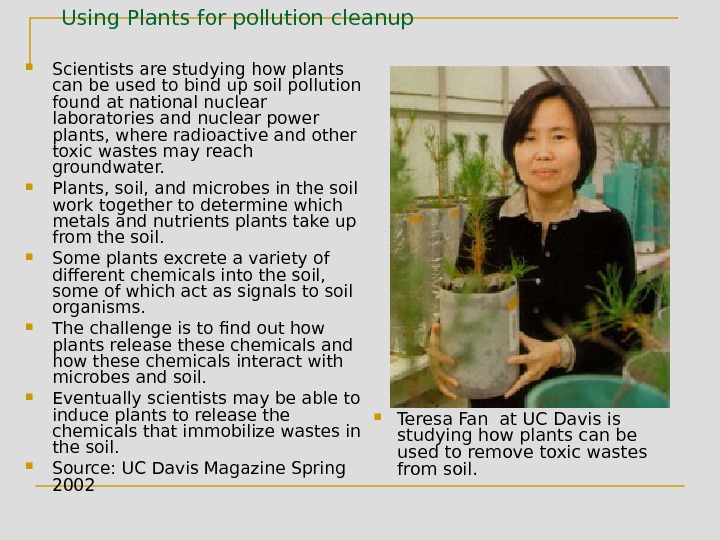
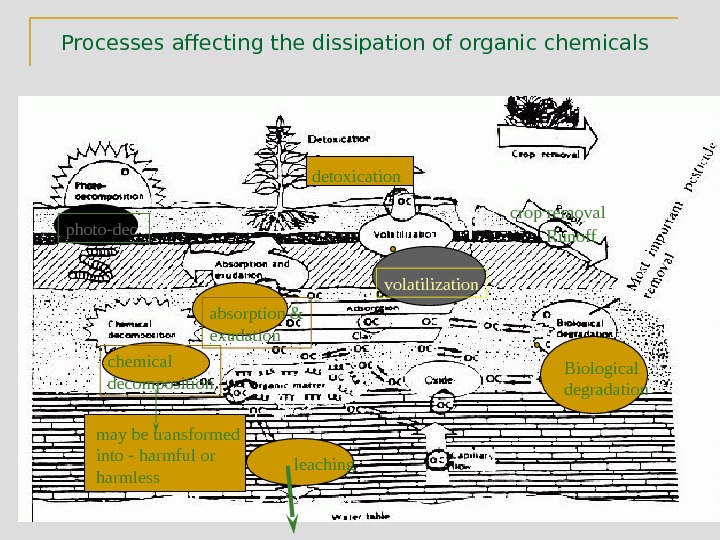


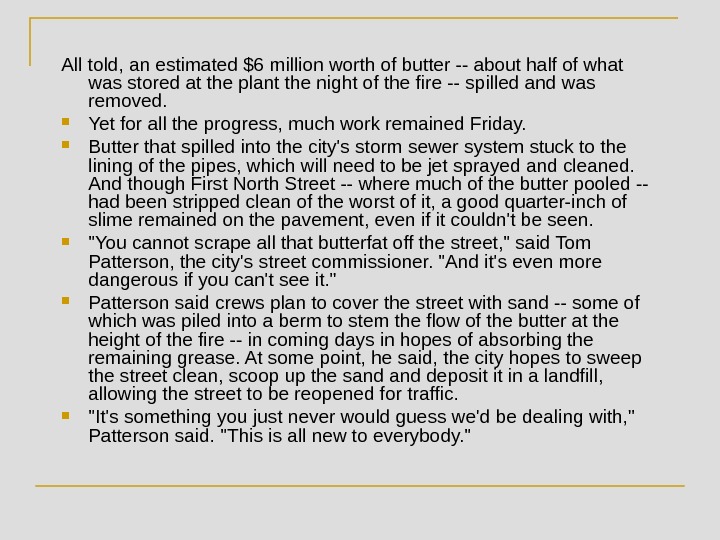
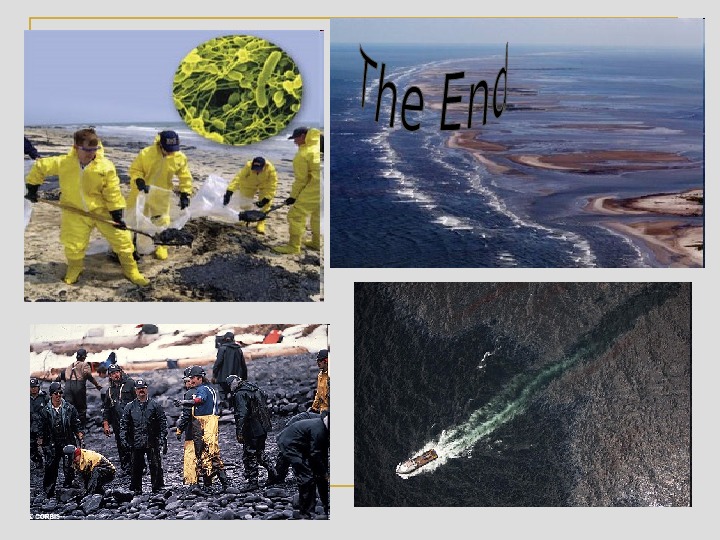
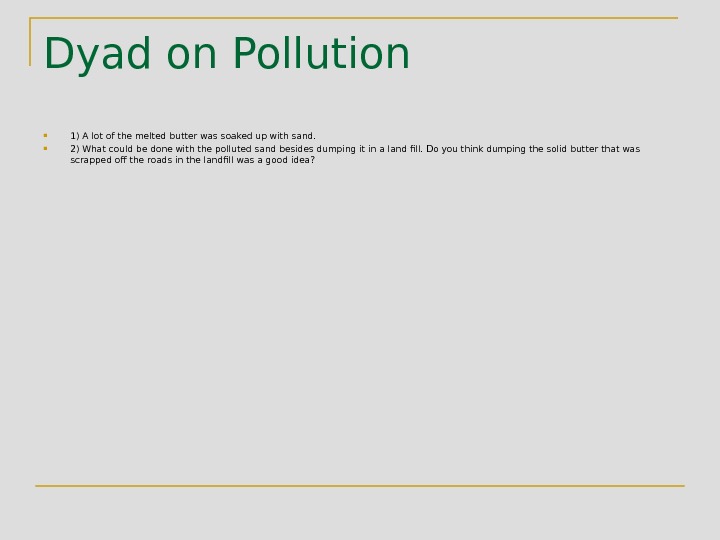
- Размер: 5.6 Mегабайта
- Количество слайдов: 24
Описание презентации Презентация l14 по слайдам
 Lecture 14 Soil Pollution: The introduction of substances, biological organisms, or energy into the soil, resulting in a change of the soil quality, which is likely to affect the normal use of the soil or endangering public health and the living environment. Ill. EPA employees wearing level «C» protective gear take soil sample in south Chicago’s «cluster sites» area. Source: Ill. EPA.
Lecture 14 Soil Pollution: The introduction of substances, biological organisms, or energy into the soil, resulting in a change of the soil quality, which is likely to affect the normal use of the soil or endangering public health and the living environment. Ill. EPA employees wearing level «C» protective gear take soil sample in south Chicago’s «cluster sites» area. Source: Ill. EPA.
 Soil contaminants are spilled onto the surface through many different activities. Most of these are the result of accidents involving the vehicles that are transporting waste material from site of origin to a disposal site. Drilling to determine pollution extent wearing level “A» protective gearwearing level “B» protective gear wearing level “D» protective gear. Much good agricultural land is threatened by chemical pollution, particularly — as here in China — by waste products from urban centres. Chemical degradation is responsible for 12 per cent of global soil degradation Source: UNEP, Zehng Zhong Su, China, Still Pictures
Soil contaminants are spilled onto the surface through many different activities. Most of these are the result of accidents involving the vehicles that are transporting waste material from site of origin to a disposal site. Drilling to determine pollution extent wearing level “A» protective gearwearing level “B» protective gear wearing level “D» protective gear. Much good agricultural land is threatened by chemical pollution, particularly — as here in China — by waste products from urban centres. Chemical degradation is responsible for 12 per cent of global soil degradation Source: UNEP, Zehng Zhong Su, China, Still Pictures
 Others involve accidents involving vehicles (automobiles, trucks and airplanes) not transporting wastes, but carrying materials, including fuel, that when spilled contaminate the soil.
Others involve accidents involving vehicles (automobiles, trucks and airplanes) not transporting wastes, but carrying materials, including fuel, that when spilled contaminate the soil.
 Other spills are the direct action of humans pouring potentially toxic materials (solvents, paints, household cleaning agents, oil, etc. ) onto the soil surface rather than disposing these materials by more appropriate means. Illegal dumping is the disposal of waste in unauthorized areas. It is also known as “open dumping”, “fly dumping”, and “mid-night dumping”. Illegal dumps occur most often along isolated roadsides in remote areas of the country. Materials often found in illegal dumps include large household appliances, tires, excess building materials, old furniture, oil, household chemicals, and common household refuse. Video clip of dumping — http: //www. dnr. mo. gov/videos. htm Washington state Missouri Virginia New York Iowa
Other spills are the direct action of humans pouring potentially toxic materials (solvents, paints, household cleaning agents, oil, etc. ) onto the soil surface rather than disposing these materials by more appropriate means. Illegal dumping is the disposal of waste in unauthorized areas. It is also known as “open dumping”, “fly dumping”, and “mid-night dumping”. Illegal dumps occur most often along isolated roadsides in remote areas of the country. Materials often found in illegal dumps include large household appliances, tires, excess building materials, old furniture, oil, household chemicals, and common household refuse. Video clip of dumping — http: //www. dnr. mo. gov/videos. htm Washington state Missouri Virginia New York Iowa
 Pollutant on soil surface When any liquid pollutant is on or just below the ground surface for any period of time, one of three things could happen to it, if it is not cleaned up first. 1 — pollutant might be washed away by precipitation, causing little or no harm to the ground on which it was found. pollutants will simply accumulate somewhere else) Seattle, WA Waco, Tx
Pollutant on soil surface When any liquid pollutant is on or just below the ground surface for any period of time, one of three things could happen to it, if it is not cleaned up first. 1 — pollutant might be washed away by precipitation, causing little or no harm to the ground on which it was found. pollutants will simply accumulate somewhere else) Seattle, WA Waco, Tx
 2 — the pollutant, if volatile, could evaporate, again causing little harm to the soil (however, not a solution to the bigger pollution problem, as it might become a source of air pollution). 3 — pollutant could infiltrate through the unsaturated soil, in much the same way as ground water.
2 — the pollutant, if volatile, could evaporate, again causing little harm to the soil (however, not a solution to the bigger pollution problem, as it might become a source of air pollution). 3 — pollutant could infiltrate through the unsaturated soil, in much the same way as ground water.
 Agricultural practices, including the use of agricultural chemicals, are another primary source of pollution on or near the ground surface. Most agricultural chemicals are water-soluble nitrates and phosphates that are applied to fields, lawns and gardens to stimulate the growth of crops, grass and flowers.
Agricultural practices, including the use of agricultural chemicals, are another primary source of pollution on or near the ground surface. Most agricultural chemicals are water-soluble nitrates and phosphates that are applied to fields, lawns and gardens to stimulate the growth of crops, grass and flowers.
 Ag Chemicals When not used by the plants the nutrients can enter streams and lakes during the run-off or leaching events. Once in a body of water, these nutrients continue to promote the growth of plants, the resulting plant detritus is food for micro-organisms, and as the population of such organisms grows, the supply of oxygen in the water is depleted.
Ag Chemicals When not used by the plants the nutrients can enter streams and lakes during the run-off or leaching events. Once in a body of water, these nutrients continue to promote the growth of plants, the resulting plant detritus is food for micro-organisms, and as the population of such organisms grows, the supply of oxygen in the water is depleted.
 «Biochemical Oxygen Demand», or «BOD». Water is capable of supporting a large population of bacteria and the bacteria will have a high demand for oxygen. Soon the oxygen supply is depleted by the bacteria and other organisms in the water now lack oxygen (fish kills) Algae in streams
«Biochemical Oxygen Demand», or «BOD». Water is capable of supporting a large population of bacteria and the bacteria will have a high demand for oxygen. Soon the oxygen supply is depleted by the bacteria and other organisms in the water now lack oxygen (fish kills) Algae in streams
 Soil Pollution Information needed to clean up materials added to soil include: 1) Kind of material — organic or inorganic — is the material biodegradable, is the material dangerous to animals and humans, 2) how much material was added to the soil, will it overload the organisms in the soil; 3) C: N ratio of the material, are additional nutrients needed ( N & P)
Soil Pollution Information needed to clean up materials added to soil include: 1) Kind of material — organic or inorganic — is the material biodegradable, is the material dangerous to animals and humans, 2) how much material was added to the soil, will it overload the organisms in the soil; 3) C: N ratio of the material, are additional nutrients needed ( N & P)
 Soil Pollution 4) Kind of Soil — will the soil be able to handle the material before groundwater is contaminated, 5) Growing conditions for the soil organisms — is it too cold, too wet etc. 6) How long has the material been on the site — is there evidence of environmental problems, is it undergoing decomposition. 7) Immediate danger to people and the environment — Urgency of the situation.
Soil Pollution 4) Kind of Soil — will the soil be able to handle the material before groundwater is contaminated, 5) Growing conditions for the soil organisms — is it too cold, too wet etc. 6) How long has the material been on the site — is there evidence of environmental problems, is it undergoing decomposition. 7) Immediate danger to people and the environment — Urgency of the situation.
 Bioremediation A treatment process that uses microorganisms (yeast, fungi, or bacteria) to break down, or degrade, hazardous substances into less toxic or nontoxic substances (carbon dioxide and water )
Bioremediation A treatment process that uses microorganisms (yeast, fungi, or bacteria) to break down, or degrade, hazardous substances into less toxic or nontoxic substances (carbon dioxide and water )
 Conditions that favor Bioremediation Temperature favorable for organisms Water available (near field capacity) Nutrients (N, P, K) in adequate supply C: N ratio of material < 30: 1 Material added is similar to naturally occurring organic material Oxygen in sufficient quantity
Conditions that favor Bioremediation Temperature favorable for organisms Water available (near field capacity) Nutrients (N, P, K) in adequate supply C: N ratio of material < 30: 1 Material added is similar to naturally occurring organic material Oxygen in sufficient quantity
 In-situ-Bioremediation Biostimulation (stimulates biological activity) Bioventing (Inject air/nutrients into unsaturated zone – good for midweight petroleum, jet fuel) Biosparging (Inject air/nutrients into unsaturated and saturated zones) Bioaugmentation (inoculates soil with microbes) Less expensive • Creates less dust • Less possibility of contaminant release into environment • Good for large volumes • Slower • Doesn’t work well in clays or highly layered subsurfaces
In-situ-Bioremediation Biostimulation (stimulates biological activity) Bioventing (Inject air/nutrients into unsaturated zone – good for midweight petroleum, jet fuel) Biosparging (Inject air/nutrients into unsaturated and saturated zones) Bioaugmentation (inoculates soil with microbes) Less expensive • Creates less dust • Less possibility of contaminant release into environment • Good for large volumes • Slower • Doesn’t work well in clays or highly layered subsurfaces
 Biostimulation cont. Biospargin g
Biostimulation cont. Biospargin g
 Ex-situ -Bioremediation Slurry-phase Soil combined with water/additives in tank, microorganisms, nutrients, oxygen added Solid-phase Land-farming: soil put on pad, leachate collected Soil biopiles: soil heaped, air added Composting: biodegradable waste mixed with bulking agent Land Applied – waste added directly to soil which is later planted to a crop. • Easier to control • Used to treat wider range of contaminants and soil types • Costly • Faster
Ex-situ -Bioremediation Slurry-phase Soil combined with water/additives in tank, microorganisms, nutrients, oxygen added Solid-phase Land-farming: soil put on pad, leachate collected Soil biopiles: soil heaped, air added Composting: biodegradable waste mixed with bulking agent Land Applied – waste added directly to soil which is later planted to a crop. • Easier to control • Used to treat wider range of contaminants and soil types • Costly • Faster
 Slurry, Solid Phase, & Land Applied
Slurry, Solid Phase, & Land Applied
 Using Plants for pollution cleanup Scientists are studying how plants can be used to bind up soil pollution found at national nuclear laboratories and nuclear power plants, where radioactive and other toxic wastes may reach groundwater. Plants, soil, and microbes in the soil work together to determine which metals and nutrients plants take up from the soil. Some plants excrete a variety of different chemicals into the soil, some of which act as signals to soil organisms. The challenge is to find out how plants release these chemicals and how these chemicals interact with microbes and soil. Eventually scientists may be able to induce plants to release the chemicals that immobilize wastes in the soil. Source: UC Davis Magazine Spring 2002 Teresa Fan at UC Davis is studying how plants can be used to remove toxic wastes from soil.
Using Plants for pollution cleanup Scientists are studying how plants can be used to bind up soil pollution found at national nuclear laboratories and nuclear power plants, where radioactive and other toxic wastes may reach groundwater. Plants, soil, and microbes in the soil work together to determine which metals and nutrients plants take up from the soil. Some plants excrete a variety of different chemicals into the soil, some of which act as signals to soil organisms. The challenge is to find out how plants release these chemicals and how these chemicals interact with microbes and soil. Eventually scientists may be able to induce plants to release the chemicals that immobilize wastes in the soil. Source: UC Davis Magazine Spring 2002 Teresa Fan at UC Davis is studying how plants can be used to remove toxic wastes from soil.
 Processes affecting the dissipation of organic chemicals photo-dec. absorption & exudation volatilization Biological degradation leachingchemical decomposition Runoffcrop removaldetoxication may be transformed into — harmful or harmless
Processes affecting the dissipation of organic chemicals photo-dec. absorption & exudation volatilization Biological degradation leachingchemical decomposition Runoffcrop removaldetoxication may be transformed into — harmful or harmless
 Affect of soil p. H on adsorption of 4 heavy metals Adsorption high = Good Soil p. H 3 3. 5 4 4. 5 5 5. 5 6 6. 5 7. 0 Pb Cu Zn Cd. Adsorption low is not good
Affect of soil p. H on adsorption of 4 heavy metals Adsorption high = Good Soil p. H 3 3. 5 4 4. 5 5 5. 5 6 6. 5 7. 0 Pb Cu Zn Cd. Adsorption low is not good
 BUTER BURN -Just how does a city go about cleaning up after a flood of melted butter? «You hire somebody else to do it, that’s how, » joked Tom Mac. Aulay, New Ulm’s assistant city manager, two days after a dramatic fire destroyed much of the Associated Milk Producers Inc. (AMPI) butter-packaging plant in town, sending an estimated 1 million pounds of hot, liquid butter pouring onto nearby streets and sidewalks. On Friday, a day after the great butter cleanup began, city and private construction crews were still going about the tricky task of removing the goo and the grease from streets, sidewalks and sewer lines. Despite steady progress, the going was slow. «It’s not everyday you get a challenge like this, » Mac. Aulay said. «It’s pretty nasty. » A day earlier, crews using bobcats and tractors scooped up much of the butter that had hardened in the December cold, dumping chunk after frozen chunk into dump trucks, which hauled the grease to a nearby landfill to break down and decompose. Boom blocks butter.
BUTER BURN -Just how does a city go about cleaning up after a flood of melted butter? «You hire somebody else to do it, that’s how, » joked Tom Mac. Aulay, New Ulm’s assistant city manager, two days after a dramatic fire destroyed much of the Associated Milk Producers Inc. (AMPI) butter-packaging plant in town, sending an estimated 1 million pounds of hot, liquid butter pouring onto nearby streets and sidewalks. On Friday, a day after the great butter cleanup began, city and private construction crews were still going about the tricky task of removing the goo and the grease from streets, sidewalks and sewer lines. Despite steady progress, the going was slow. «It’s not everyday you get a challenge like this, » Mac. Aulay said. «It’s pretty nasty. » A day earlier, crews using bobcats and tractors scooped up much of the butter that had hardened in the December cold, dumping chunk after frozen chunk into dump trucks, which hauled the grease to a nearby landfill to break down and decompose. Boom blocks butter.
 All told, an estimated $6 million worth of butter — about half of what was stored at the plant the night of the fire — spilled and was removed. Yet for all the progress, much work remained Friday. Butter that spilled into the city’s storm sewer system stuck to the lining of the pipes, which will need to be jet sprayed and cleaned. And though First North Street — where much of the butter pooled — had been stripped clean of the worst of it, a good quarter-inch of slime remained on the pavement, even if it couldn’t be seen. «You cannot scrape all that butterfat off the street, » said Tom Patterson, the city’s street commissioner. «And it’s even more dangerous if you can’t see it. » Patterson said crews plan to cover the street with sand — some of which was piled into a berm to stem the flow of the butter at the height of the fire — in coming days in hopes of absorbing the remaining grease. At some point, he said, the city hopes to sweep the street clean, scoop up the sand deposit it in a landfill, allowing the street to be reopened for traffic. «It’s something you just never would guess we’d be dealing with, » Patterson said. «This is all new to everybody. «
All told, an estimated $6 million worth of butter — about half of what was stored at the plant the night of the fire — spilled and was removed. Yet for all the progress, much work remained Friday. Butter that spilled into the city’s storm sewer system stuck to the lining of the pipes, which will need to be jet sprayed and cleaned. And though First North Street — where much of the butter pooled — had been stripped clean of the worst of it, a good quarter-inch of slime remained on the pavement, even if it couldn’t be seen. «You cannot scrape all that butterfat off the street, » said Tom Patterson, the city’s street commissioner. «And it’s even more dangerous if you can’t see it. » Patterson said crews plan to cover the street with sand — some of which was piled into a berm to stem the flow of the butter at the height of the fire — in coming days in hopes of absorbing the remaining grease. At some point, he said, the city hopes to sweep the street clean, scoop up the sand deposit it in a landfill, allowing the street to be reopened for traffic. «It’s something you just never would guess we’d be dealing with, » Patterson said. «This is all new to everybody. «

 Dyad on Pollution 1) A lot of the melted butter was soaked up with sand. 2) What could be done with the polluted sand besides dumping it in a land fill. Do you think dumping the solid butter that was scrapped off the roads in the landfill was a good idea?
Dyad on Pollution 1) A lot of the melted butter was soaked up with sand. 2) What could be done with the polluted sand besides dumping it in a land fill. Do you think dumping the solid butter that was scrapped off the roads in the landfill was a good idea?
